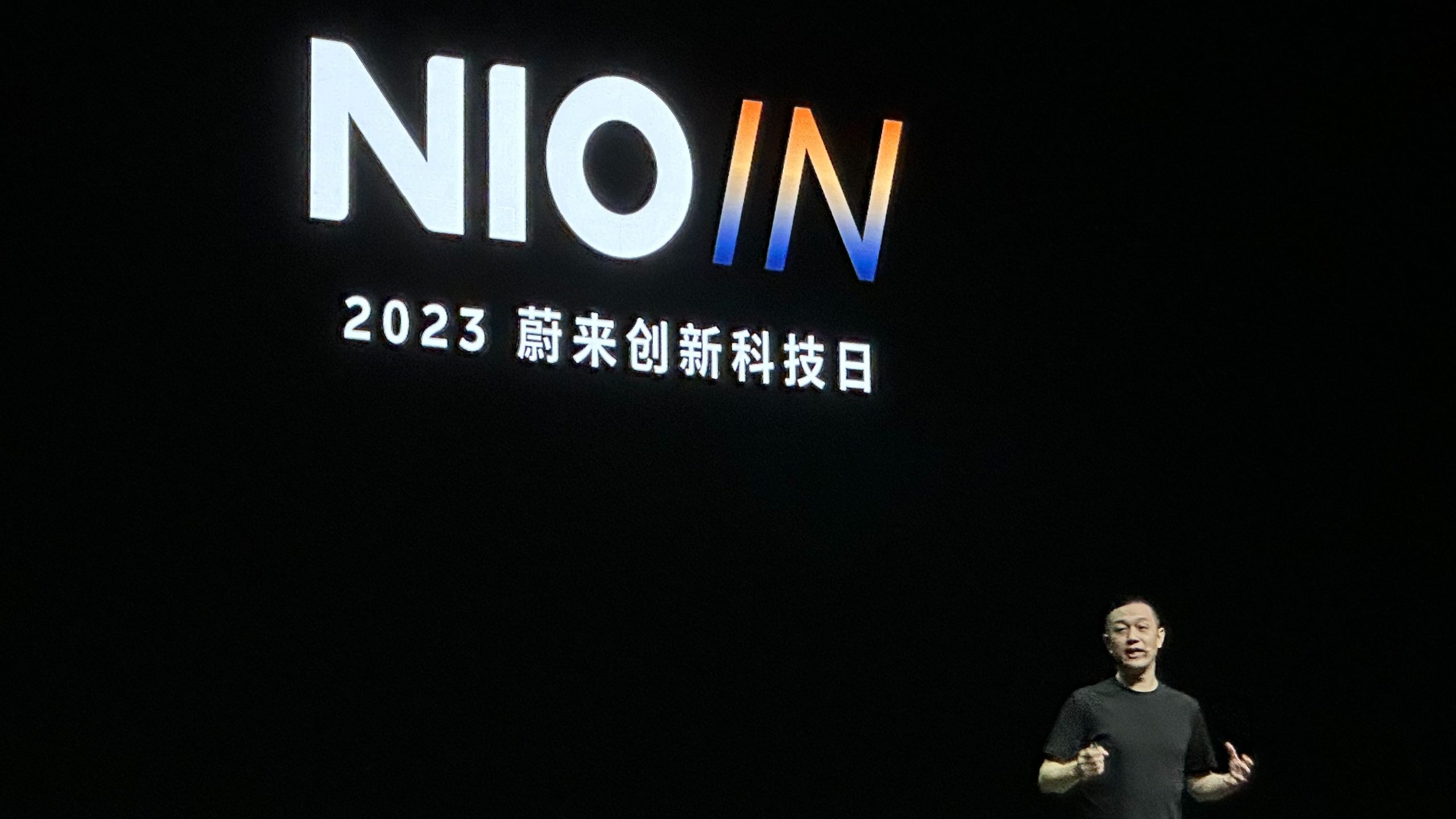Who is the CTO of NIO?
The answer is: Bin Li.
On September 21, on the first Innovation and Technology Day since NIO’s establishment, NIO’s founder, chairman and CEO Bin Li publicly responded to the question of NIO’s CTO for the first time. He stated:
“NIO does not have a CTO, I am NIO’s CTO, but I also don’t want to make my title too long… that’s too narcissistic, not good. But essentially speaking, I am the person in charge of R&D for this company.”
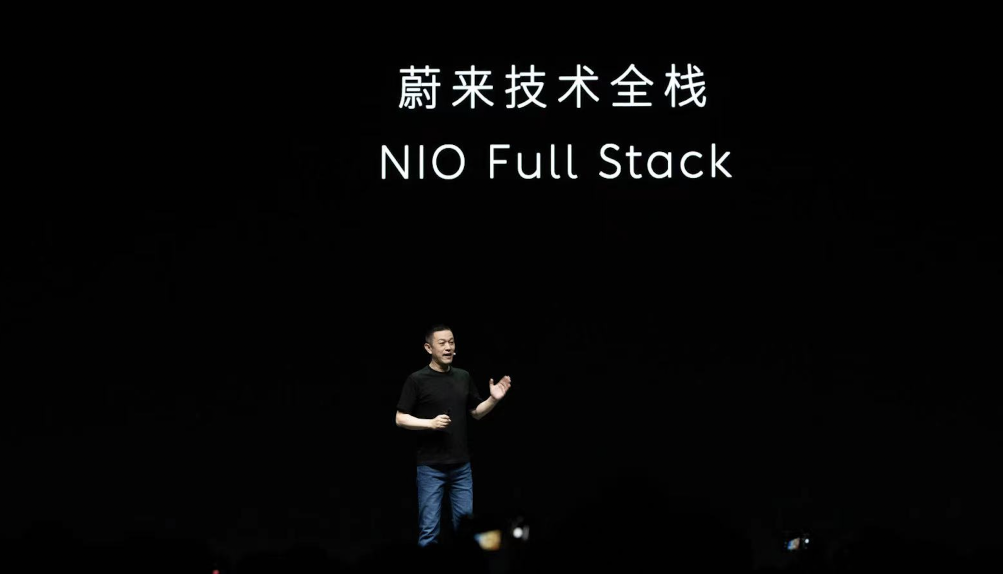
Serving as the CTO in the capacity of NIO’s leader, it is evident that Bin Li wants to use this opportunity to assert that NIO is not just a user-centric company, but one that places high importance on technology R&D. Consequently, at this NIO Innovation and Technology Day, Bin Li dedicated over an hour to systematically showcasing NIO’s full-stack technological capabilities and releasing some new products and achievements.
One that particularly attracted the public’s attention is the NIO Phone.
Core Product Logic of NIO Phone: Vehicle-Passenger Interconnectivity
From the pricing range of 6499 to 7499 Yuan, it is obvious the NIO Phone is not a volumetric goal-oriented smartphone — its positioning is very precise. As Bin Li stated, it is “a smartphone born for NIO car owners.”
Therefore, Bin Li did not expend much effort discussing its hardware configurations, even though these configurations are substantially high-end. Let’s briefly go through them:
- Qualcomm Snapdragon 8 Gen 2;
- Minimum memory and storage combination of 12GB + 512GB, maximum of 16GB + 1TB;
- Adopting a 6.81 inch 2K 120Hz screen;
- 3 50Megapixel cameras;
- 5200mAh large battery;
- Supporting 66W wired quick charge + 50W wireless quick charge;
- Supporting large-area ultrasonic fingerprint unlock;
- IP68 waterproof;
- Dolby panoramic sound.
Although these hardware configurations are indeed at the higher end of what the Android smartphone camp can offer, from a product perspective, they bring nothing new and may not support a starting price of 6499 Yuan.
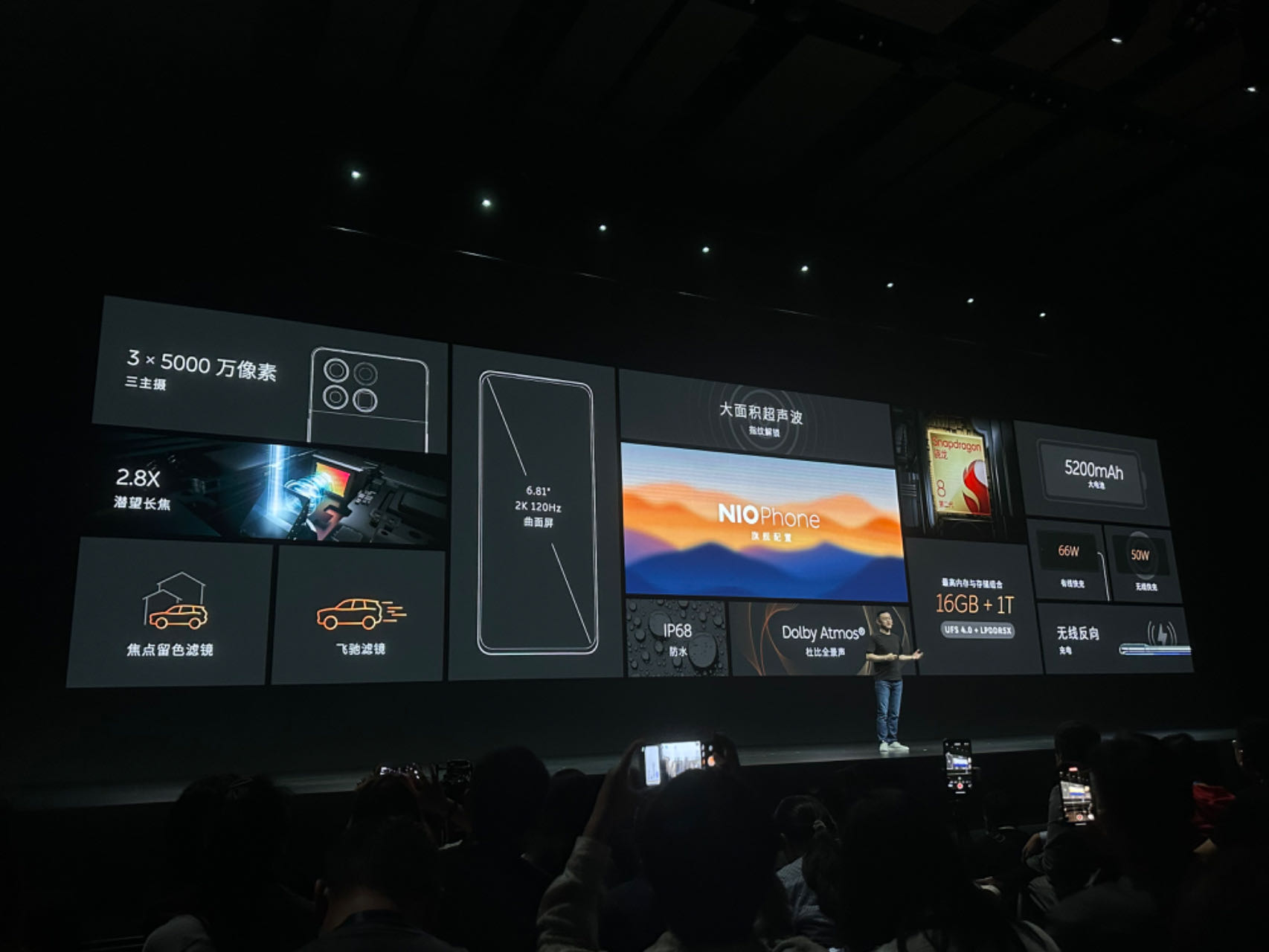
At the same time, at the system design level, the NIO Phone uses the SkyUI, which is based on the Android system. The interface adopts a pure and clean design style with a skyline design language, which includes improving its security and fluidity at the system level, while also emphasizing “0 system ads & 0 pre-installed commercials”. Compared to other smartphone industry participants, it is somewhat unique, but not particularly outstanding.So, the real highlight of the NIO Phone lies in its interconnectivity with NIO vehicles, central to which is the NIO Link panoramic interconnection technology. More specifically:
- With the NIO Link panoramic interconnection technology, the UWB ultra-wideband technology built into the NIO Phone can completely replace car keys, with support for unlocking even without power for 48 hours.
- Through the NIO Link vehicle control key on the left side of the NIO Phone, users can wake up over 30 car-driver interconnection functions with a single click. These include checking vehicle status, parking location, unlocking and locking the vehicle, lowering and raising windows, opening the trunk, and remote air conditioner adjustment. What’s noteworthy is that functionalities like unlocking, opening the trunk, flashing lights, sounding the horn, summoning the vehicle, and remote parking can also be achieved even without an internet connection.
- Inside the cabin, the NIO Phone can automatically switch the vehicle control card according to the seat the phone is situated at, precisely adjusting the seating functionality and zone-based air conditioning of that seat. It can also help adjust these for other passengers. By waking up NOMI on the phone, remote vehicle control can be achieved through voice commands, you can find charging and battery swap stations in a sentence, and even send battery swap booking requests to the vehicle with one click.
- With the NIO Phone’s clipboard relay function, navigation information can be synched with one click. Text copied on the phone, location information extracted and recognized can be safely synched to the vehicle terminal, with navigation started by lightly tapping the central control screen. The navigation route relay can seamlessly switch from pedestrian navigation to vehicle terminal navigation upon entering the vehicle without needing to input data twice. The phone photo album based on NIO Link can also be viewed in real-time and vehicle-shot videos downloaded with a click.
- With the sky-window feature activated, a separate NIO Phone will run on the vehicle’s central control screen, supporting parallel operation of apps on both the central screen and the phone.
- In business scenarios, Super Meeting will automatically transfer to the vehicle terminal upon entering the vehicle and can even use the vehicle’s hardware, providing a better mobile meeting experience. NIO Link games can also be played on the large central screen.
In general, the NIO phone is essentially a phone centered around NIO vehicles, boasting an interconnectivity experience between cars and phones. So, its numerous distinctive features are all tied to user scenarios of NIO vehicles.

In other words, the core value of the NIO Phone lies in its interactive relationship with NIO vehicles. The core capabilities it demonstrates are also the system-level underlying connection capabilities that NIO has built towards mobile devices from the perspective of a vehicle host manufacturer. Of course, this is also the best entry point for a vehicle host manufacturer making phones.
NIO’s Full-stack Technology Debuts for the First Time, with In-house Chipset Following Close Behind.For NIO, the core ability carried by the NIO Phone, NIO Link, is only one part of its comprehensive technology system.
Indeed, at NIO’s Innovation Technology Day, NIO showcased its “technology full-stack” for the first time. It is divided into 12 major sectors, including:
- Chips and vehicle hardware;
- Battery system;
- Electric drive and high voltage system;
- Vehicle Engineering;
- Whole Vehicle Domain Operating System;
- Panoramic connection;
- Intelligent driving;
- Intelligent cockpit;
- Intelligent energy;
- Intelligent manufacturing;
- Artificial Intelligence,
- Global digital operations.
NIO emphasizes that its R&D and innovation are based primarily on considering the user’s interests, the user experience across the entire life cycle, continuous innovation leadership and improved systematic efficiency. The 12 key technology domains will fulfill NIO’s needs for intelligent, electric cars, and product, service, community, multi-brand, multi-platform, multi-region research and development.
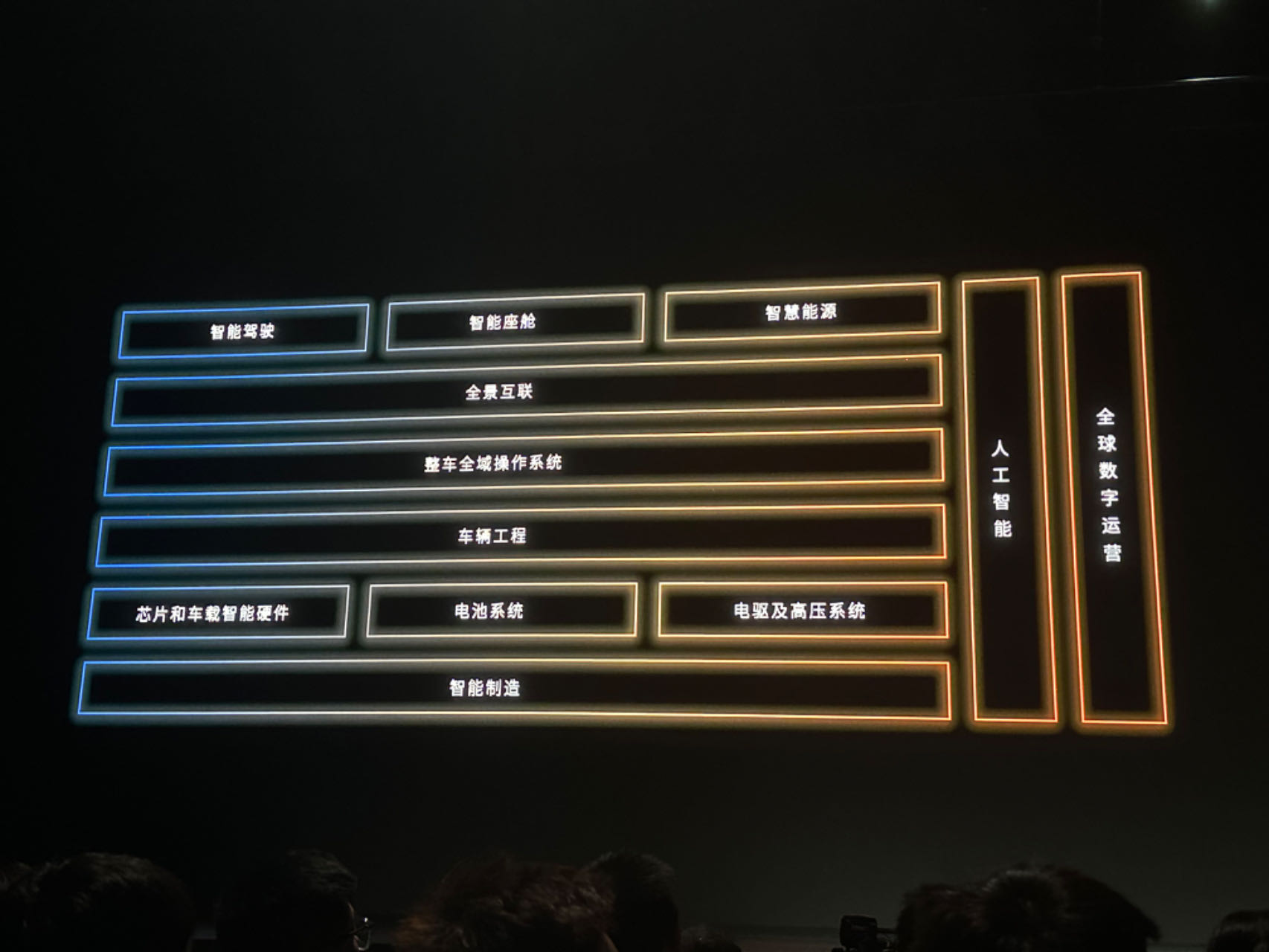
Based on these 12 fields, Li Bin also announced some of NIO’s latest R&D achievements.
Self-developed chip “Yang Jian”
As a highlight of NIO’s technology development capability, the first chipset product developed by NIO was officially unveiled.
This chip, aimed at being the main controller of lidar, is named “Yang Jian”. It has the characteristics of high integration, low power consumption, and high performance, and it can provide better support in complex scenarios. Li Bin emphasized that it leads the field of lidar main control chips.
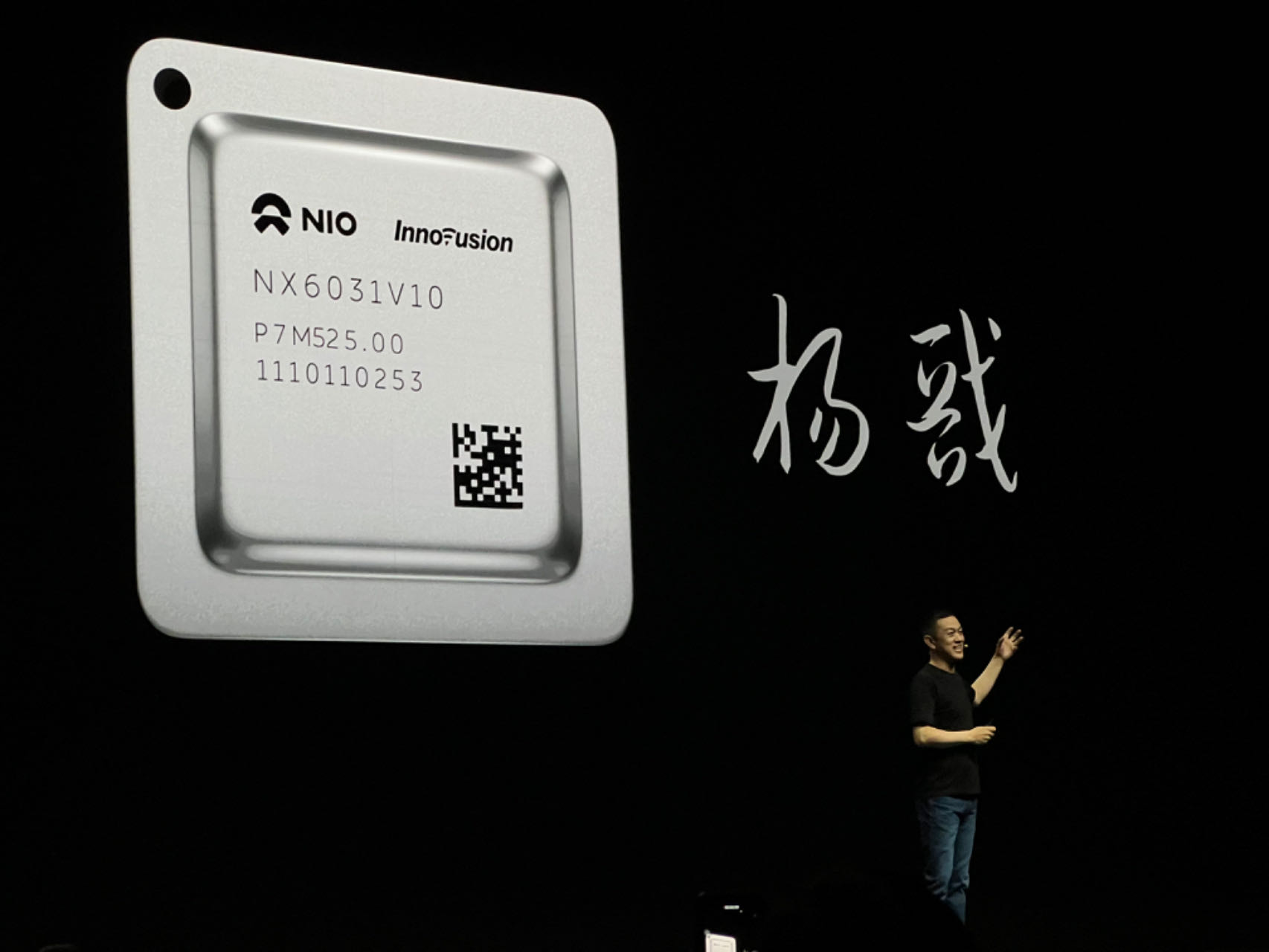
Specifically, the “Yang Jian” chip is the first self-developed chip launched by NIO’s intelligent hardware team. It uses an 8-core 64-bit processor to provide robust computing support and is equipped with an 8-channel 9bit ADC, with a sampling rate up to 1GHz. This efficiently captures raw data from lidar sensors and also reduces the power consumption of lidar by 50%.
The “Yang Jian” chip achieves faster functional responses through optimization of point cloud processing delay. It can process up to 8m points per second and receive both raw data and point cloud data, providing a better data closed-loop iteration for the entire system.
According to official claims, this chip will be mass-produced in October.
Regarding this chip, Li Bin stated in the interview segment that with this chip, each car could save a few hundred dollars. If viewed from the development cost, it could recoup in about a year.
Whole Vehicle Domain Operating System SkyOS
During the Innovation Technology Day, NIO also launched SkyOS, the industry’s first intelligent electric vehicle Whole Vehicle Domain Operating System developed and released by an automotive company.The Celestial Pivot SkyOS is NIO’s embedded vehicle operating system, fostering a comprehensive and multi-dimensional technical infrastructure for auto research and development, enabling various devices to integrate seamlessly for efficient cooperation.
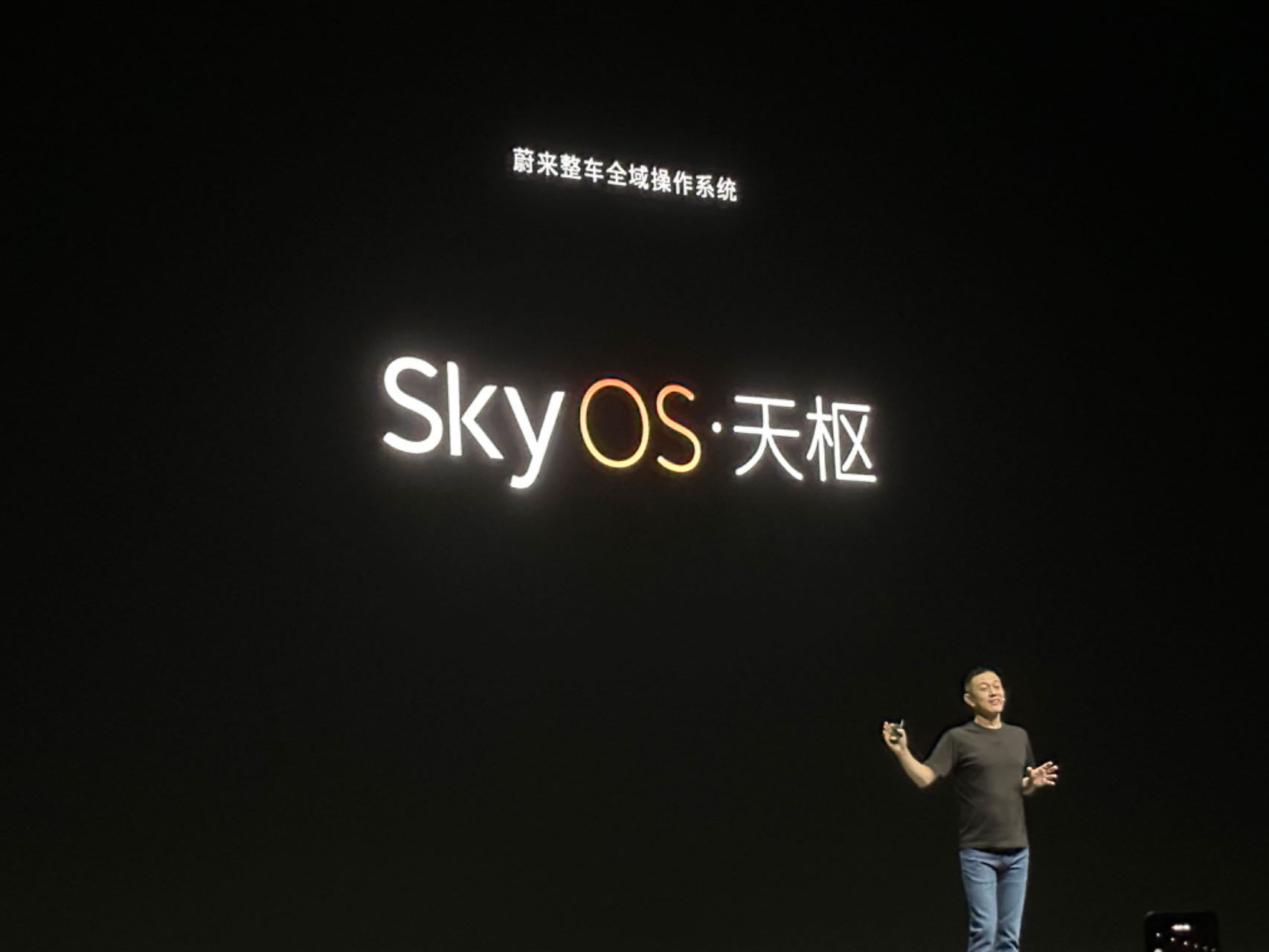
Specifically, Celestial Pivot SkyOS establishes a 1+4+N technology cluster spanning areas such as vehicle control, intelligent driving, cockpit management, and mobile connectivity. In detail:
- ‘1’ refers to ‘SkyOS-H’, the control program managing the operating system needs of the cockpit and autonomous driving domain and providing a secure platform.
- ‘4’ includes four sub-systems: ‘SkyOS-M,’ the high-security, high-reliability, and high-real-time operating system based on the microkernel, ‘SkyOS-L,’ the lightweight, high-reliable, high-real-time operating system,’ SkyOS-R,’ the high-performance operating system created for complex and rich application scenarios, and ‘SkyOS-C,’ the operating system tailored to Android.
- ‘N’ signifies ‘SkyOS-Core Middleware R&D,’ comprising SOA framework, application framework, OTA, diagnostic module, energy management module, dual safety, distributed processing engine, etc.
According to NIO’s planning, Celestial Pivot SkyOS will fully implement function production on the NT3 platform model.
NIO Link: More than just a connection between phone and car
While the core technical capacity of NIO Phone is indeed the NIO Link, it is not merely about connecting a phone and vehicle for NIO Link panoramic conjunction.
According to NIO’s introduction in this Innovation Technology Day, NIO Link bases itself on hardware and strives to realize a secure and open vehicle-centric new mode of mobile connection through hardware-software integration and endpoint-road-cloud cooperation.
Capability-wise, NIO Link spans dimensions such as hardware, data, and perception, capable of cross-domain computational resource manipulation and possesses a distributed learning ability in conjunction with vehicles, endpoints, roads, and the cloud.
Consequently, NIO Link is not confined to traditional vehicle connections, transcending a simple link between a vehicle and a phone, and offering full-link device interconnection. By interconnecting phones, wearables, battery swapping stations, charging piles, and road facilities, seamless interaction with the surrounding environment is possible.
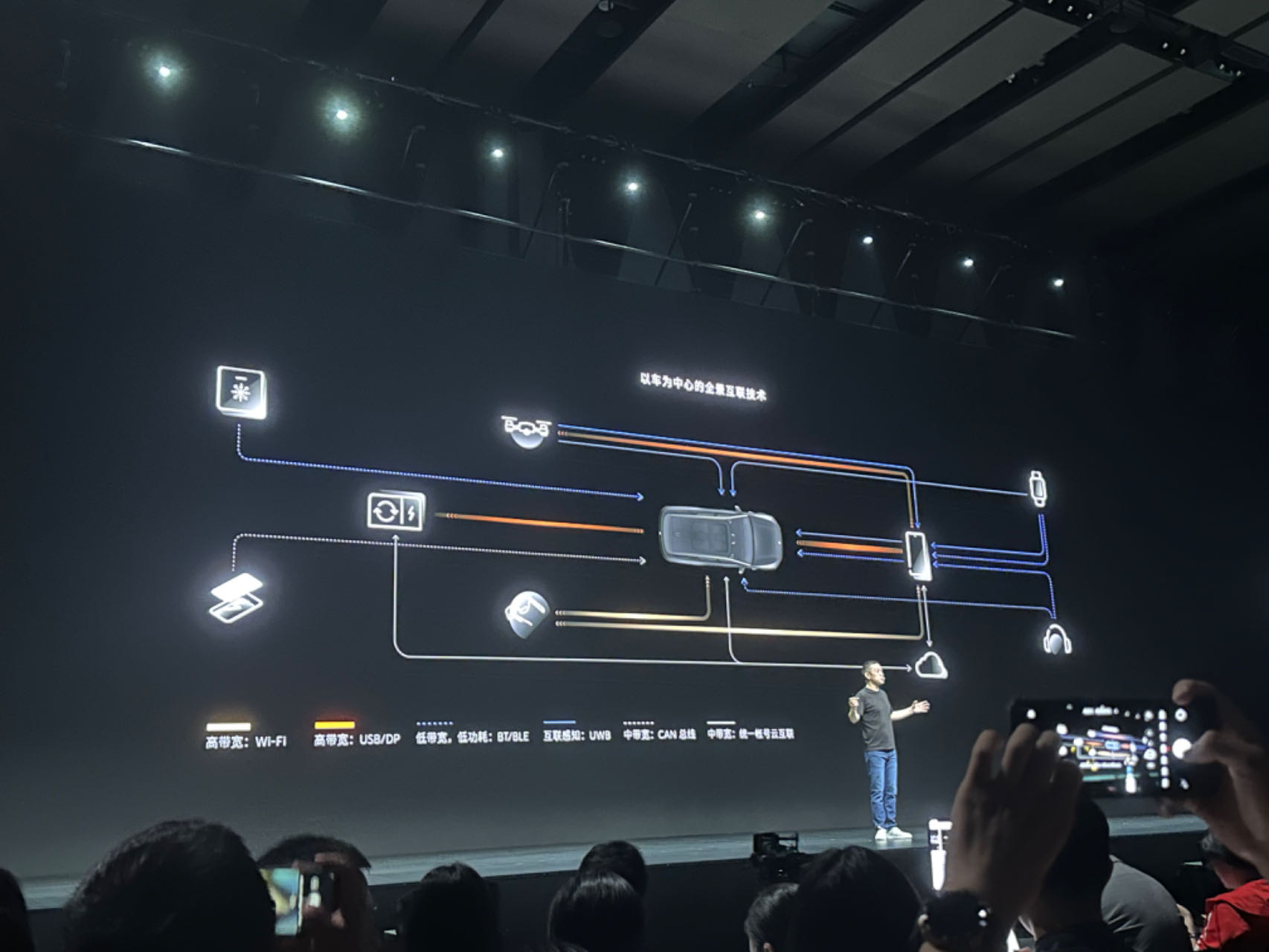
In terms of user experience, NIO Link supports interconnection between the in-car user’s mobile devices and intelligent cockpit devices, expanding a wider application scope for in-car entertainment, work, rest, etc. Simultaneously, by deeply integrating with data content, NIO Link enhances user experiences such as digital car keys, vehicle parking, cockpit control, etc. – all of these have been realized on NIO Phone.Moreover, NIO has made a point to emphasize the security of NIO Link. NIO Link employs a proprietary solution for full-link security, allowing a seamless and safe connection across devices. Sensitive user data is only transmitted between trusted devices, ensuring the safety and privacy of the user’s information.
From October, NOP+ will extend into urban areas
In terms of autonomous driving, NIO asserts it has established an end-to-end, all encompassing technological capability, from foundational platforms to algorithm frameworks and applications.
At this technology innovation event, NIO formally announced that its enhanced Assistant Navigation on Pilot (NOP+) will extend from highways to urban areas, offering users a point-to-point intelligent driving experience that covers all types of road conditions. It’s worth mentioning that the existing NOP has already clocked up over 500 million kilometers.
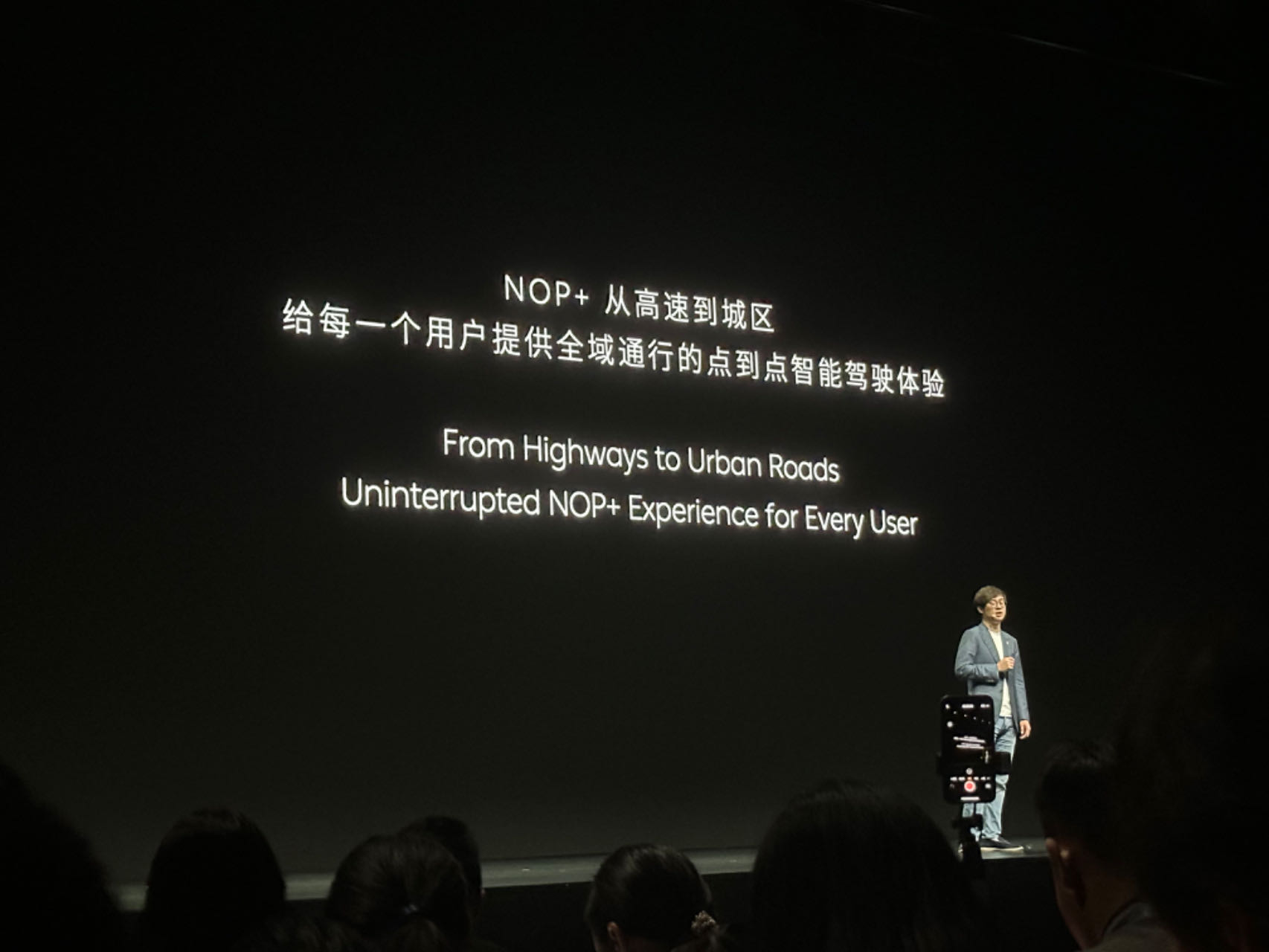
NIO anticipates that by the end of this year’s fourth quarter, the Assistant Navigation routes covered will reach a cumulative total of 60,000 kilometers for urban areas. By the first quarter of next year, this number is expected to hit 200,000 kilometers, and by the second quarter, 400,000 kilometers.
To accomplish this, NIO will allow users to input their preferred Assistant Navigation routes into the NIO app. Starting from October, routes will be gradually enabled for users in line with operational plans and road conditions. Prior to enabling these routes, NIO will verify each user’s desired route.
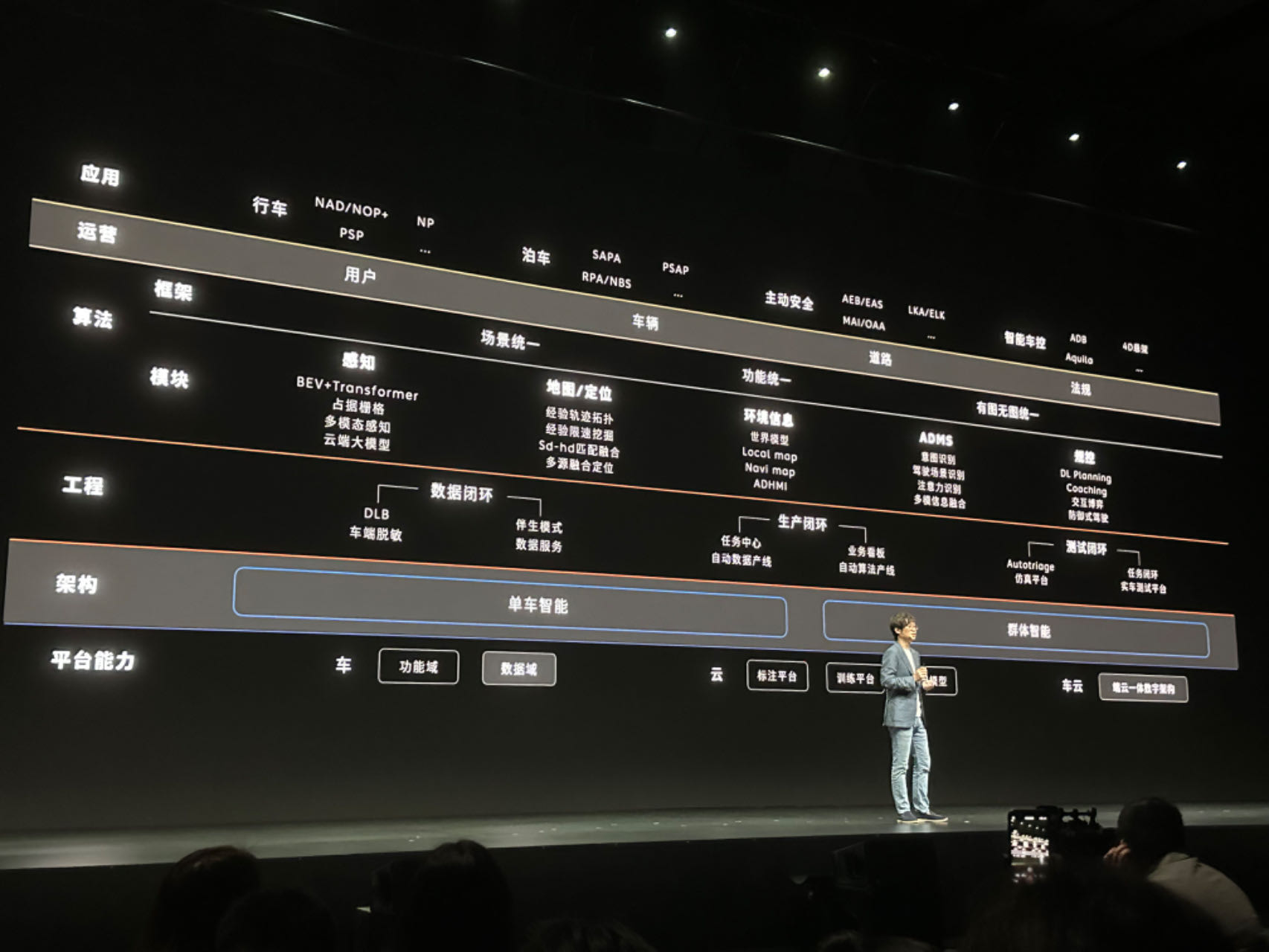
Verification, optimization, activation, and operation of NOP+ based on its universal capability is NIO’s main approach to urban area Assistant Navigation. NIO highlighted several key areas of technological support:
- The latest generation of static perception network NADLane 2.0 can perceive intersection details in real time, without any need for high-precision mapping.
- The NADWWM, a large cloud-based model, to effectively enhance vehicle perception;
- NADHVN, a hierarchically-structured value network, gives NOP+ a more refined interactive ability;
- NADArch unifies the technical architecture, providing users with a smoother intelligent driving experience. The distributed computing power of NIO’s fleet of vehicles equipped with the NAD collective intelligence system has reached 38,100 POPS.
- NIO will unify scenarios and functionalities, both with and without mapping, and collective intelligence, to provide users with safer, more efficient fully autonomous navigation assist functionality.
Other technological highlights
In addition to the above four major sectors, NIO has also unveiled some notable technological highlights for the other 8 sectors.
To be more specific:
- NIO has introduced ADAM CCC (Center Computing Cluster), the industry’s first cross-domain fusion supercomputing cluster which enables shared computing power for autonomous driving, cockpit, and vehicle control.* By August 2023, NIO has broken through 500 patent applications for its electric drive system.
- NIO has launched an intelligent cockpit “App Store” with over 40 top-notch, premium Apps concurrently stationed.
- By 2025, NIO plans to establish 4,000 battery swap stations worldwide, achieving a 90% coverage in China’s electric district and creating a high-speed battery swap network across 19 major city clusters.
- By 2025, NIO’s 80% of manufacturing will be assisted by AI decisions, thereby further improving efficiency.
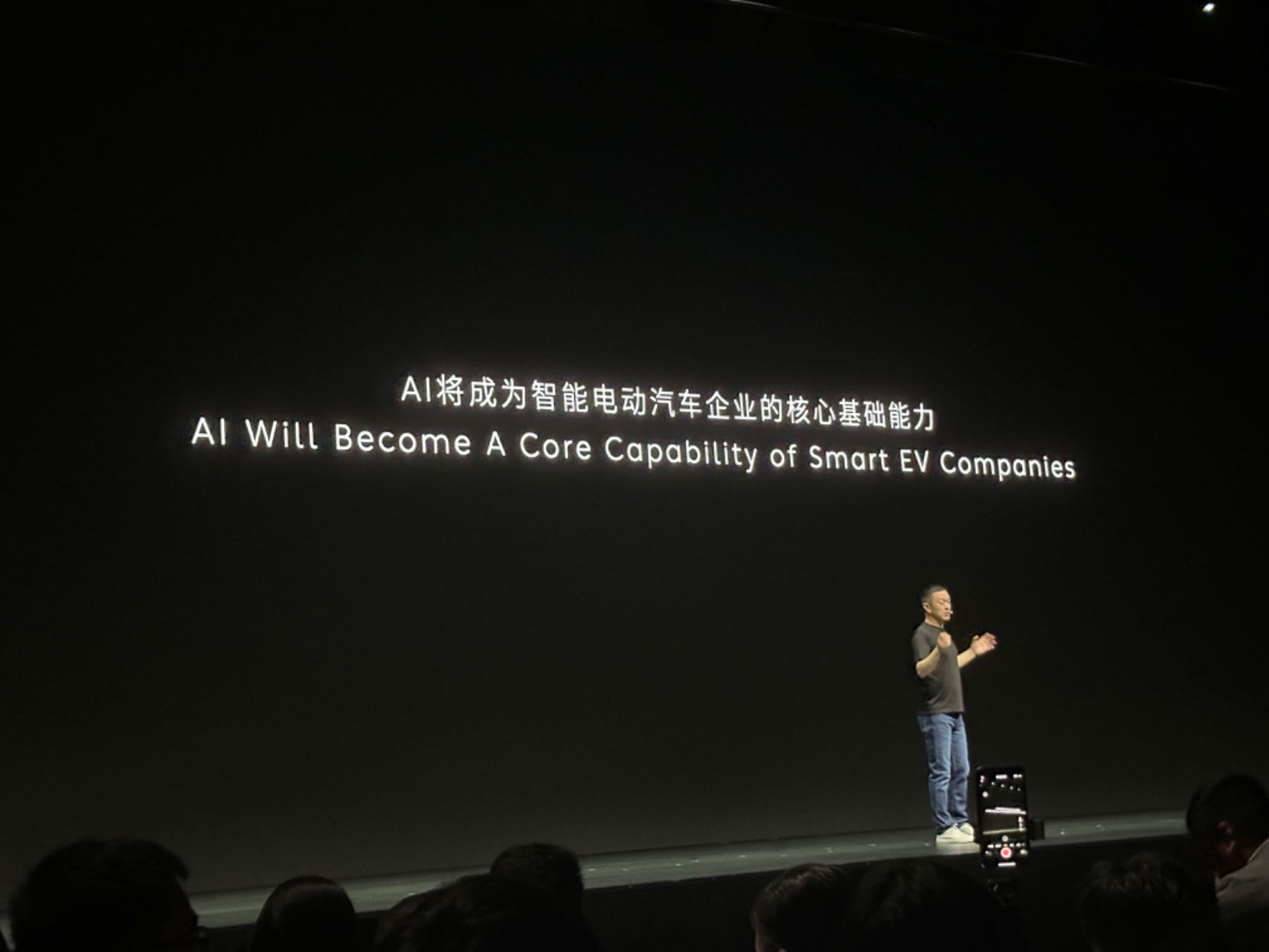
Noteworthy is that Li Bin stated at the event site that NIO has a long-term layout for full-stack AI technology capacity. Through establishing its own AI infrastructure, training large NIO proprietary base models and vertical domain models, and developing AI tools, AI is fully empowered across products, services, community, research & development, and manufacturing.
He also emphasized that AI will become the key foundational capability needed by successful electric vehicle enterprises.
Finally
“Service” has always been NIO’s most recognized label. However, on this Innovation and Technology Day, Li repeatedly stressed that while NIO does have an established reputation in the service area, it is far from perfect.
What he would like to convey is that NIO is a company that places substantial emphasis on research and development.
Indeed, since the establishment of NIO, it has made considerable investments on R&D, from proprietary motors, all-aluminum bodies, intelligent driving, battery swap stations, battery packs, to chips, with some results already evident in products and customer experience.
From the data perspective, NIO has more than 11,000 R&D staff in various countries including China, Singapore, the US, Germany, and the UK, and holds over 7300 patents globally.
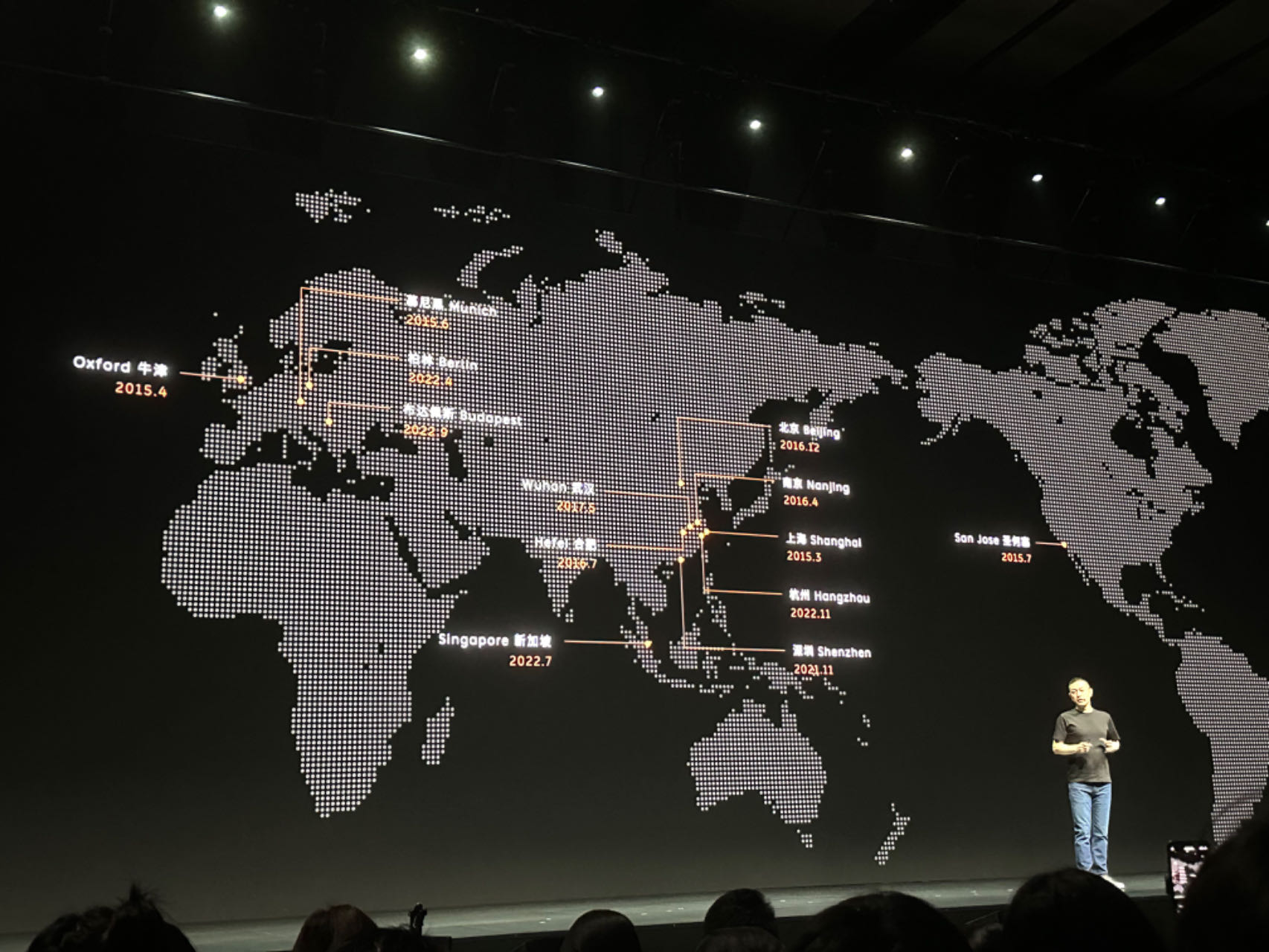
Financially, the amount invested in R&D every quarter is significant. In Q2 of this year, NIO invested 3.345 billion RMB in R&D, a YoY increase of 55.6% and an 8.7% increase from the previous quarter, far exceeding Xpeng’s 1.37 billion and LI’s 2.43 billion RMB.
However, NIO’s extensive commitment to technological advances triggers concerns over its financial health. After all, from the public financial figures, not only has NIO not reached profitability but its gross margin has also declined in recent quarters, falling to a meagre 1% in Q2 this year. Therefore, some have suggested “a more prudent spending.”
However, Li responded at the event that NIO would never cease R&D investments. He emphasized that efficiency, especially systematic efficiency, will be enhanced.Li Bin stated that in terms of research and development, NIO tends to consider issues from the perspective and cycle of long-termism. He believes that from a long-term perspective, NIO is basically trading R&D for gross profit and scenarios, exchanging short-term R&D investment for long-term gross profit, which is also another underlying logic.

However, in answering the question about the “cycle of long-termism”, Li Bin also said that the company has always been making five-year plans. However, considering the significant fluctuations in the market and various other factors, the company has started to require clarity on things for the next two years, with specific operation plans to be accomplished within those two years.
Talking about the next two years, Li Bin also soberly stated that the next two years are crucial. Not every company can survive these two years, and NIO will also need to ensure its survival over this period; he said that everything so far has been a qualifier, a group stage match, but in the next two years, the final match will commence, and it will be very brutal.
However, in Li Bin’s logic, even in the face of the brutal war in the next two to three years, NIO cannot use up all its energy at once. It needs to reserve energy for the final match and stock up on “ammunition” for later. Thus, this becomes the core reason why NIO still insists on increasing its R&D investment under the current still unprofitable situation.
This article is a translation by AI of a Chinese report from 42HOW. If you have any questions about it, please email bd@42how.com.
